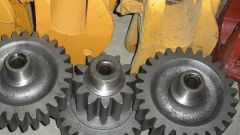Overhead costs are additional costs to ensure the processes of production and circulation of products. They accompany the primary activity of the company but are not associated with it directly, so it may not be included in the cost of goods, works or services. These costs include: maintenance of fixed assets; organization and maintenance of production; training workers; business; deductions on social insurance; salaries of administrative personnel; damage to tangible property; downtime and other nonproductive expenses. The most popular example of a miscellaneous charge is to pay for the Internet and telephone. If the enterprise is engaged in trade, for the miscellaneous expenses will also include expenses of storing, packaging, transport and distribution of goods.Many enterprises seek to minimize overhead costs, as they may not be fully repaid by the inclusion in the cost of goods. However, they provide normal functioning of the company, therefore, the optimization must be approached very carefully. In the cost of production can be written indirectly, using various methods. The most common methods of planning of overhead costs are:1) direct counting Method for individual items.2) the Calculation of costs as a percentage of the wage of workers employed in production.3) Mixed method. In this case some overhead costs (taxes, depreciation, salaries of administrative staff etc.) is determined by the direct method, and the second part - method percentage. The result can determine the amount of overhead costs per production unit and plan regarding business enterprise.
What is overhead
In the analysis of costs of production they are divided depending on the nature of the relationship with the object in direct and overhead costs. If the first have a direct relationship to the unit of a product also affect the pricing, the latter can not be attributed directly to the production object.

Is the advice useful?








